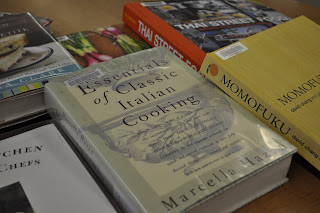I love butter. Okay, no surprise there. I did not grow up eating butter. Margarine was cheaper and butter was ‘bad’ for you. Somewhere along the way, I was introduced to butter and I have not turned back. I fell in love!
Butter has some unique properties that margarine just does not have. First of all butter is mostly short chain fatty acids. When you place butter on your tongue, it melts very quickly and leaves no aftertaste. This makes butter good for things like buttercream frosting.
American butter is about 80% milk fat, no more than 16% water and 4% milk solids. The solids cause butter to burn, therefore, butter is not be used for frying. This problem can be solved by making clarified butter. Simply melt the butter and allow the solids to sink to the bottom and the water to evaporate. In Indian cuisine this is referred to as ghee. 

Butter can be purchased with and without salt. Most bakers prefer butter without salt. One can purchase whipped butter which has air incorporated into it. On a volume to volume basis, whipped butter contains fewer calories. Although once uncommon in the United States, European butters are becoming more common. European butter has a higher butterfat content than American butter.
Meunière is French for miller’s wife. It describes a style of cooking in which the food, especially fish is lightly coated with flour and sautéed in butter. This dish is finished off with fresh lemon juice and parsley. Sole is used for this recipe because the fillets are thin and therefore cook quickly. This means you can cook the fish without the butter burning. If you want to make sole meunière, try this recipe.
Sole Meunière
Serves 4.
Ingredients:
 Fish:
Fish:Salt and freshly ground black pepper
4 sole fillets, about 3 to 4 ounces each½ cup all purpose flour
1 Tablespoon vegetable oil
1 Tablespoon butter
Sauce:
¼ cup butter, cut into 4 pieces
2 Tablespoons Italian parsley, chopped
Juice of ½ lemon
Directions:
1. Season fish with salt and pepper. Coat fish in flour; shake off the excess.
2. Heat oil in large skillet over medium-high heat until oil is hot. Add butter. When foam subsides, add fish and cook until golden brown, about 2 to 3 minutes. Flip and cook second side. Divide fish between 2 plates. Keep warm.
3. Sauce: Place skillet over medium-high heat. Add butter; cook until golden brown, 1 to 2 minutes. Remove from heat. Add parsley and lemon juice. Spoon over fish and serve with lemon wedges.





